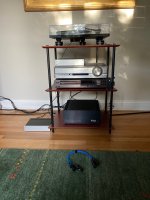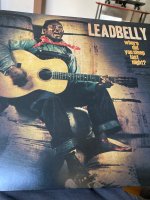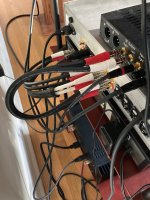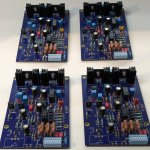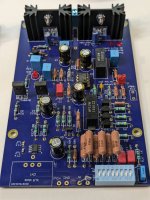…which is precisely the reason they were added. 
My sense is that the only compelling reason for populating the XLR line drivers is to accommodate long cable runs between the phono stage and preamp
Last edited:
my interest in XLRs is potentially to simplify a completely balanced system.
I got a BA2018 kit which could do balanced in.
I was intrigued by a DAC that the manufacturer claimed worked better balanced but that left my Pearl 1 out. then came the Pearl 3 and the ACA monoblocks which would complete the balancing act. I just had to double up the preamp.
I have fun idiosyncratic designs for all three which would be nice to realize beyond sketches. For once.
I got a BA2018 kit which could do balanced in.
I was intrigued by a DAC that the manufacturer claimed worked better balanced but that left my Pearl 1 out. then came the Pearl 3 and the ACA monoblocks which would complete the balancing act. I just had to double up the preamp.
I have fun idiosyncratic designs for all three which would be nice to realize beyond sketches. For once.
Perhaps depending on the preamp, however with the Iron Pre, the balanced output sounded ever so slightly clearer.The balanced outputs? Great! More precisely, to my ears they work exactly as well as the RCA outputs. I did a relatively brief A/B test by dialing in a 6dB boost on the RCA input to the HPA4 (actually a bit complicated, since the RCA inputs are automatically boosted by 15.8dB, but not important). Over the course of about half an hour, even though I knew which input was playing at any given moment, I really could not hear any qualitative difference between the two. I've been listening to the balanced outputs for much of the weekend, and am pretty confident that they're sonically equivalent to the RCA outputs.
My sense is that the only compelling reason for populating the XLR line drivers is to accommodate long cable runs between the phono stage and preamp (which is my justification). It obviously also frees up an RCA input on the preamp, which could be important, I suppose.
I have auditioned the RCA and XLR from the Pearl3. I can't hear any difference musically or dynamically.
I do use RCA for short runs (1m) and XLR for long runs (3m). For example, I can record from the XLR using cables to my listening chair while sending the RCA to my main system. Sometimes I use headphones and HPA a distance away. XLR has remained interference free so far, even with the microwave, wifi and LED lighting in my house.
On the RCA (other phono preamps than the Pearl3), I used to get pops sometimes when certain switches were turned on/off, washing machine, vacuum cleaner. I don't notice it with XLR and the Pearl3 excellent PS.
I do use RCA for short runs (1m) and XLR for long runs (3m). For example, I can record from the XLR using cables to my listening chair while sending the RCA to my main system. Sometimes I use headphones and HPA a distance away. XLR has remained interference free so far, even with the microwave, wifi and LED lighting in my house.
On the RCA (other phono preamps than the Pearl3), I used to get pops sometimes when certain switches were turned on/off, washing machine, vacuum cleaner. I don't notice it with XLR and the Pearl3 excellent PS.
in general - if SE and Bal are both done properly (speaking of stages), speaking of sound quality - difference between them is purely matter of personal preference
This kind of comment often pops up, it always makes me snicker a bit when I see it.
In this case, if they are done properly why do we need both ?
Is one or the other done improperly?
My thinking is, it is just looking down the nose at other options.
Perhaps it needs a transformer. (just kidding)
Thanks DT
many possible and valid reasons to choose/use one or another ....... explaining all of them would be more piling up scenarios where one or the other is more adequate
anyhow, remark "if done properly" is there to point importance of comparing two equally good solutions when using particular constructions to evaluate principles, outlining stance that one is not better than other, it just can be more appropriate, either for intended context of use, or simply to listener's preferences
now, also important to outline factor that some balanced configurations are not having stellar performances*** when used in any SE scenario ( be it SE in , or SE out or whatever) simply as result of chosen approach to get to stellar performance when used fully balanced; just one factor more when evaluating
in short....... my stance in general - is that Bal is not superior to SE, nor SE is superior to Bal; horses for courses
***some Bal stages are having extremely low THD when used in native modus operandi ( Bal) while having sorta highish THD (even harmonics ) when used in non-native modus operandi ( SE)
anyhow, remark "if done properly" is there to point importance of comparing two equally good solutions when using particular constructions to evaluate principles, outlining stance that one is not better than other, it just can be more appropriate, either for intended context of use, or simply to listener's preferences
now, also important to outline factor that some balanced configurations are not having stellar performances*** when used in any SE scenario ( be it SE in , or SE out or whatever) simply as result of chosen approach to get to stellar performance when used fully balanced; just one factor more when evaluating
in short....... my stance in general - is that Bal is not superior to SE, nor SE is superior to Bal; horses for courses
***some Bal stages are having extremely low THD when used in native modus operandi ( Bal) while having sorta highish THD (even harmonics ) when used in non-native modus operandi ( SE)
I just A/B'd side A of this record. Balanced played first, then single ended. The only thing I changed was the inputs to the preamp.
Balanced is set back and clearer. I listened to balanced first, before the little Aleph Classic was warm. Single ended is forward and warmer. It's harder to hear exactly what Leadbelly is saying when single ended.
There is a difference I am certain.
Balanced is set back and clearer. I listened to balanced first, before the little Aleph Classic was warm. Single ended is forward and warmer. It's harder to hear exactly what Leadbelly is saying when single ended.
There is a difference I am certain.
Attachments
No. They're both Blue Jeans Cable, 1 foot. The single ended is Belden wire, whatever the Blue Jeans standard is, the XLR is the newer Canare DA202.
In other systems I (we've) heard a difference between Mogami XLR and this Canare DA202.
It's probably my preamp that makes the most difference here, what it does with balanced in vs. single ended. So unless one's preamp and amp are up to it, going balanced out from a Pearl 3 might not matter. But in my case I absolutely prefer balanced out.
In other systems I (we've) heard a difference between Mogami XLR and this Canare DA202.
It's probably my preamp that makes the most difference here, what it does with balanced in vs. single ended. So unless one's preamp and amp are up to it, going balanced out from a Pearl 3 might not matter. But in my case I absolutely prefer balanced out.
I think it always is interesting to read these subjective listening comparisons.
But i am personally always looking for the sound that makes the foot tap, the head bob, the heart race, and that can bring a happy tear or two the corner of my eye.
🎺🙂🎸
But figuring out WHAT traits in each component in the chain it is that actually brings the true joy and musicality out of the whole audiosystem is not that easy in my opinion.
Sometimes it is more clarity that does the trick, sometimes it is more powerful muscularity. Sometimes less details is more naturally musical coherent and less distracting.
Go figure… 🙂👍
But i am personally always looking for the sound that makes the foot tap, the head bob, the heart race, and that can bring a happy tear or two the corner of my eye.
🎺🙂🎸
But figuring out WHAT traits in each component in the chain it is that actually brings the true joy and musicality out of the whole audiosystem is not that easy in my opinion.
Sometimes it is more clarity that does the trick, sometimes it is more powerful muscularity. Sometimes less details is more naturally musical coherent and less distracting.
Go figure… 🙂👍
Thanks for sharing, have you compared with other amplifiers other than aleph and similar triode like input amplifiersI just A/B'd side A of this record. Balanced played first, then single ended. The only thing I changed was the inputs to the preamp.
Balanced is set back and clearer. I listened to balanced first, before the little Aleph Classic was warm. Single ended is forward and warmer. It's harder to hear exactly what Leadbelly is saying when single ended.
There is a difference I am certain.
Nothing more than a certified A/V electronics technician for close to 50 years now.What are your credentials?
It was just a comment. I´m not interrested in a discussion here.
As to "a very well regarded and successful audio company" , I guess that´s in the eyes (ears) of the beholder.
2/3 of his revenue is based on snake-oil products, his socalled "Hi-End recordings" have been analyzed to be extraordinarily noisy etc. etc.
As I said: I´ll just skip the video.
BTW.... don´t bother.... I won´t be replying. This thread is for Pearl-3, not this nonsense.
Stuffing complete. Four boards biased as planned. Because I'm obsessive, I adjusted collector load resistor and cascode voltage down to account for ~3 mA per 2SK170BL JFET. As a result cascode Vce now measures 1.0V if J2 is closed (MM) and 1.5V if open (MC). So far so good.
Attachments
Stuffing complete. Four boards biased as planned. Because I'm obsessive, I adjusted collector load resistor and cascode voltage down to account for ~3 mA per 2SK170BL JFET. As a result cascode Vce now measures 1.0V if J2 is closed (MM) and 1.5V if open (MC). So far so good.
3 ma X 4 Op-Amps := 12 ma total.
After seeing all the RN65 resistors stacked up I am looking at R1 a RN55 resistor specified at 0.1 Watt, at 12 ma it is cooking at over 0.1 Watt. A little heat and excess noise?
Thanks DT
Yes, I agree. Not knowing what value I would need, I stuck two RN55 in parallel in there. B.t.w. the RN55 really is a 1/4 watt resistor, downrated to 1/8 watt for mil spec. So perfectly safe. Still, turns out Mouser has the value I need for R1 in RN65 so will add this to my next order.
- Home
- Amplifiers
- Pass Labs
- Pearl 3 Burning Amp 2023
